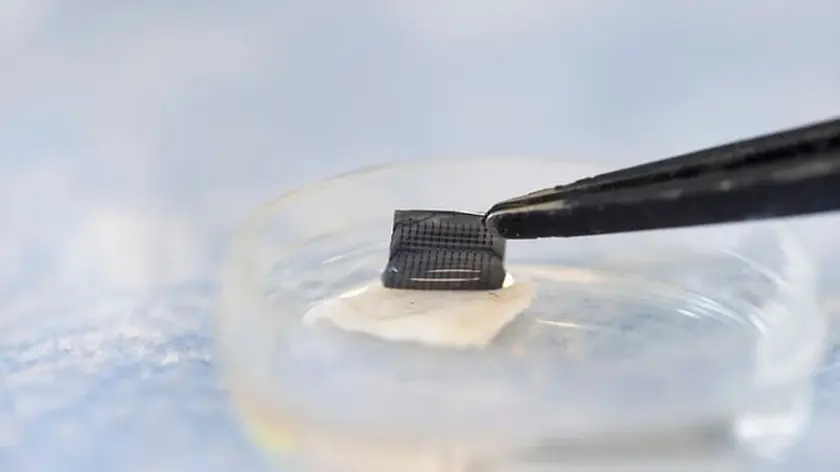T4K3.news
ExoPatch melanoma test moves closer to home use
A silicone microneedle patch shows promise for at home melanoma testing with human trials planned.

An experimental silicone patch could enable rapid at home melanoma testing, reducing the need for biopsy.
ExoPatch brings melanoma at home testing closer
Researchers developed ExoPatch, a silicone microneedle patch that samples interstitial fluid from the skin. The patch is coated with a gel that captures exosomes from cells. In tests on pig skin and mouse skin the patch distinguished melanoma from healthy tissue with a 3.5-fold darker line. The needles are 0.6 mm long and less than 100 nanometers at the tip and they do not draw blood.
Researchers say the patch could be adapted to detect other cancers and that a pilot study in humans is planned, followed by clinical trials. The test is not yet proven in people, and experts see a long regulatory path ahead before home use becomes common. If successful, the ExoPatch could change how screening is done and reduce the need for biopsies in some cases.
Key Takeaways
"The star-shaped needles make puncture easier and less painful"
Sunitha Nagrath describing the patch design
"A fair-skinned person with moles must go to the doctor about every six months to send off a biopsy to see if they’re malignant or benign"
Nagrath on current testing practices
"The potential applications are huge"
Nagrath on future uses
"With this test they could instead test at home get the results right away and follow up with a dermatologist for a positive result"
Comment on patient workflow
Home testing for cancer promises speed and convenience but rests on accuracy, user interpretation, and safety. A skin patch that reaches only the epidermis lowers pain and barriers to testing, yet that choice raises concerns about false results and how results are linked to care.
The idea shifts responsibility for early detection from clinics to individuals and families. If the approach proves safe and reliable, it could expand access but also widen gaps if people lack resources to follow up with doctors.
Highlights
- The star-shaped needles make puncture easier and less painful
- A fair-skinned person with moles must go to the doctor about every six months to send off a biopsy to see if they’re malignant or benign
- The potential applications are huge
- With this test they could instead test at home get the results right away and follow up with a dermatologist for a positive result
At-home melanoma patch raises safety and access concerns
If proven in humans, the ExoPatch could move cancer screening from clinics into homes, but it also raises questions about accuracy, patient interpretation, data privacy, follow up care, and who bears the cost. Regulators will decide how quickly it can be adopted.
Where this leads next will test both science and trust in home care.
Enjoyed this? Let your friends know!
Related News

Mother warns about nasal tanning sprays after daughter's death

Oxford United stadium planning approved

Germany pauses arms exports to Israel

Rising cancer rates in young women

Walkable cities lift daily activity

EV long trip reveals time and cost hurdles

Royal move to Forest Lodge

Erin Patterson found guilty of murder and attempted murder
